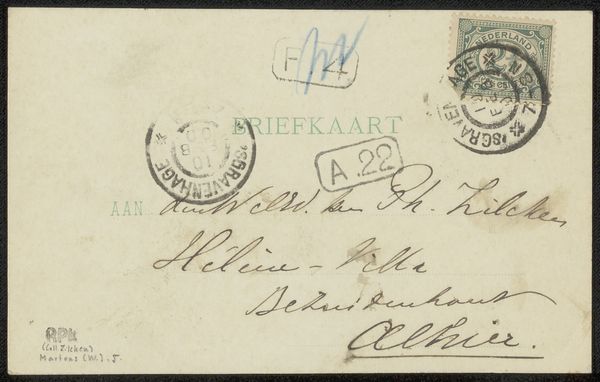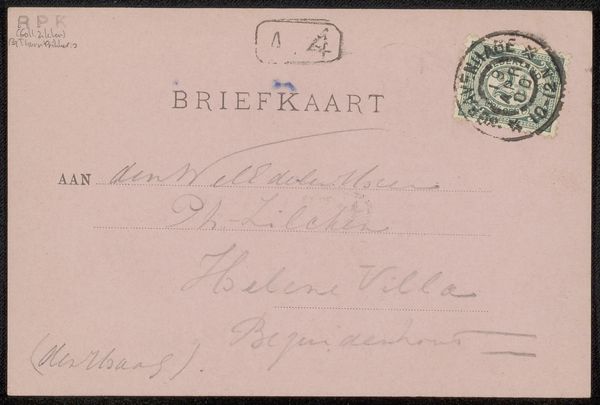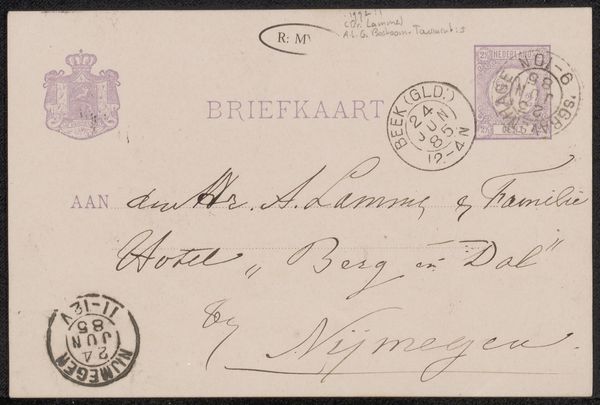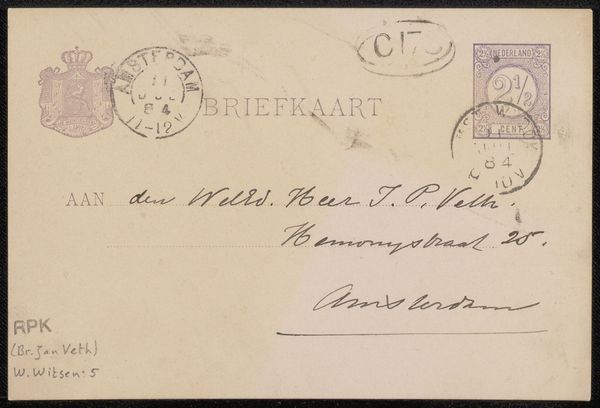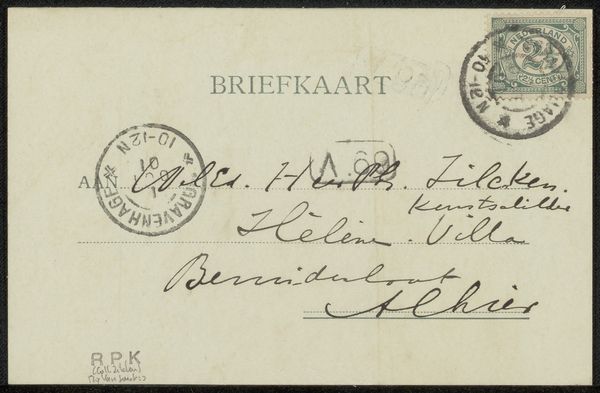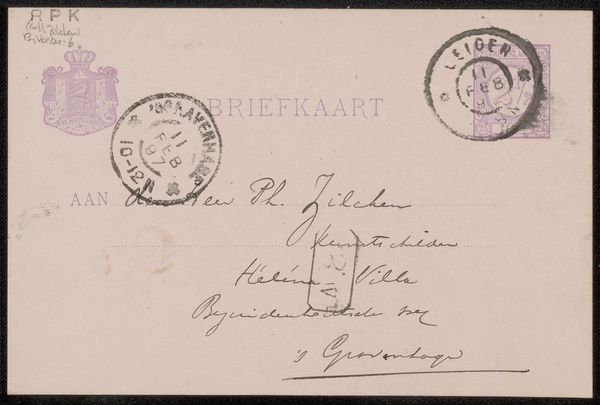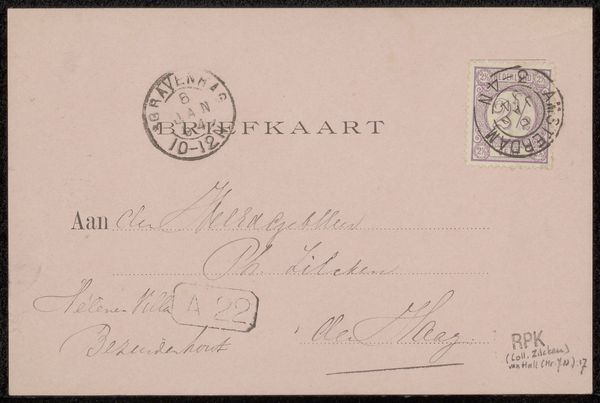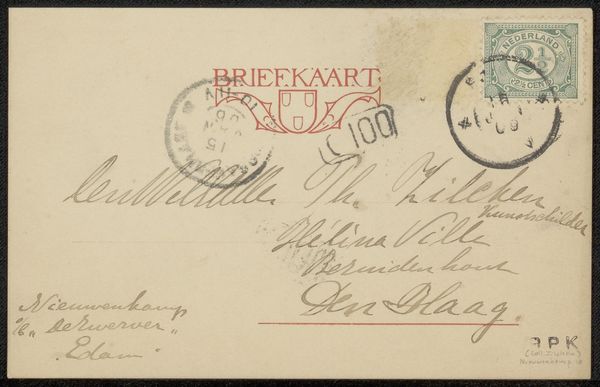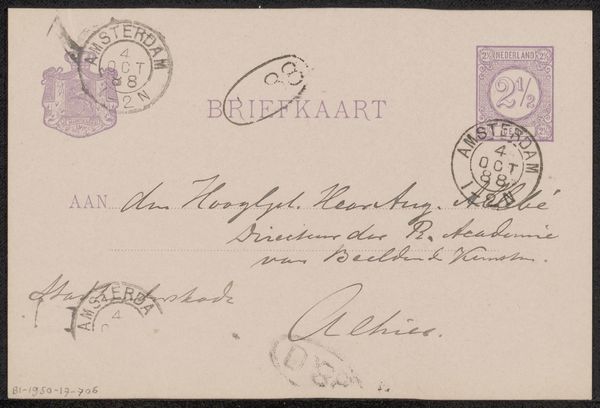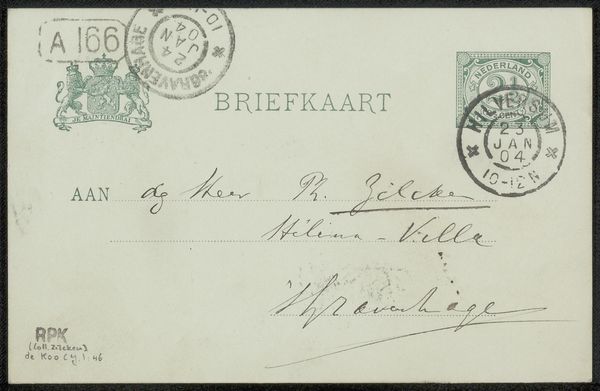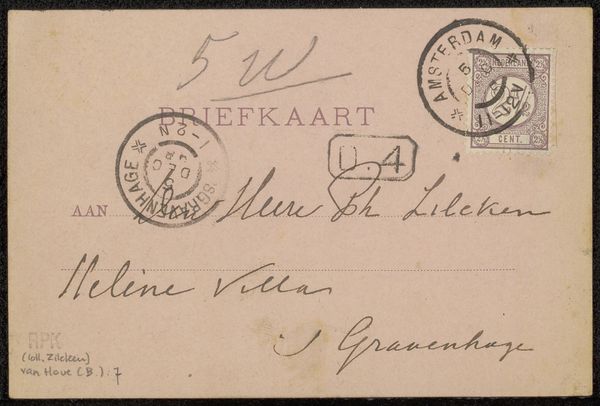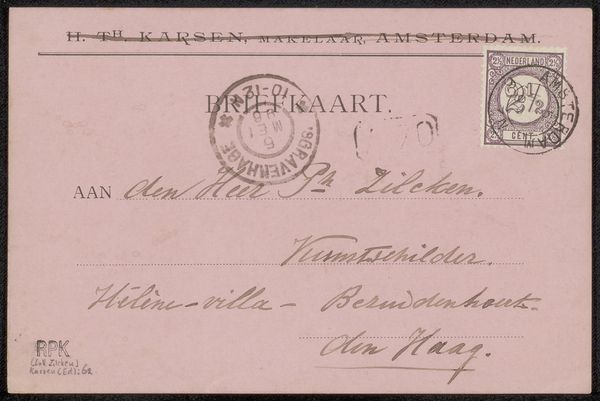
drawing, ink
#
drawing
#
pen sketch
#
ink
Copyright: Rijks Museum: Open Domain
Editor: So this is "Briefkaart aan Philip Zilcken," possibly from 1904, by Theo van Hoytema. It's an ink drawing, or rather, a pen sketch on what appears to be a postcard. It's incredibly intimate and mundane at the same time – just someone's mail. What strikes you most about a seemingly ordinary object like this being preserved in the Rijksmuseum? Curator: Well, it's easy to dismiss something like this as ephemera, but consider its function as a social artifact. The postal markings, the handwriting, the address – it tells a story of communication within a specific social and artistic network. Think about how reliant artists were on physical correspondence before the internet. It offers a snapshot of that reality. What details jump out to you in terms of this circulation of imagery? Editor: The stamps are interesting – little works of art themselves. And the address is carefully written, it suggests the importance of accurate delivery, reflecting institutional systems for moving objects, but then... it’s ultimately someone’s personal correspondence! What’s so significant about it as a postcard versus other medium? Curator: Right! Its nature as a postcard suggests affordability and accessibility. It was a medium readily available for artists and the general public alike, thus a vital, easily accessible communications network. Were art world postcards, such as those promoting exhibits, often collected and repurposed at the time for private use in that era? Editor: That’s fascinating. Thinking about the postcards collected reminds me that something created for immediate use can gain historical value over time. This isn't just mail; it's a record of connection. Curator: Exactly. It underscores how museums curate and ascribe value, shaping our understanding of art’s broader social role. These decisions actively impact cultural significance.
Comments
No comments
Be the first to comment and join the conversation on the ultimate creative platform.
